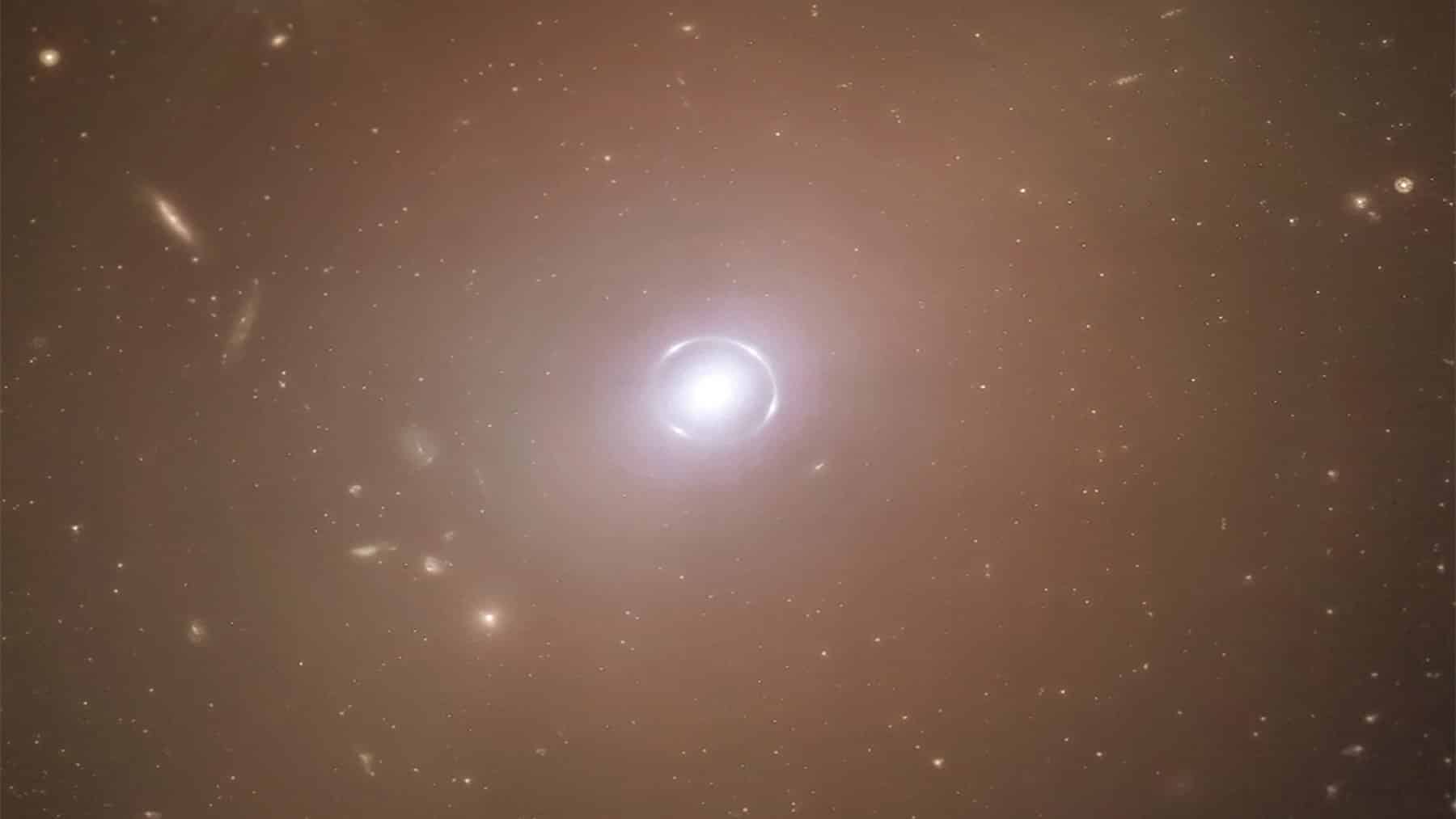Over the past decade, the concept of scale has often been used to understand the universe, like comparing the Sun to the Earth. This explains why astronomers like to express the size and occurrence of cosmic objects in terms of light-years. However, in a recent study, astronomers have come across a cosmic monster that breaks the scale of anything ever discovered.
Astronomers find a monster at the center of the cosmos
Every year, astronomers and scientists attempt to uncover more about the workings of the universe. Yet, as if in a loop, these scientists frequently find themselves facing something stranger and more complex than their former discovery. In fact, what they have come across this time seems almost impossible to comprehend.
This discovery comes in the form of a gravitational illusion. These are rare phenomena where objects in the cosmos are presented under warped or distorted gravitational lenses. When these are viewed through telescopes, they often form dazzling sights to marvel at. However, the lens discussed in this article presents something rather unusual.
Astronomers have recently discovered a system of gravitational lenses about five and a half billion years away. These lenses form a cosmic horseshoe that distorts background objects in such a way that they form perfect cosmic alignments. Behind this horseshoe lens, scientists have found a supermassive black hole believed to be the size of 36 billion Suns.
Unravel the science behind this supermassive black hole
Found at approximately 10 billion light-years away, this supermassive black hole was unveiled by a team of scientists led by Carlos Melo-Carneiro from the Instituto de Física, Universidade Federal do Rio Grande do Sul in Brazil. According to him, this black hole appeared to have formed when the universe was yet in its adolescent stage.
Now, according to astronomers, supermassive black holes of that size are often found at the center of enormous galaxies. This led Carlos and his team to uncover the gravitational lens in the foreground to be LRG 3-757. Luminous Red Galaxies, or LRGs, are massive and extremely bright galaxies.
LRG 3-757 is believed to be 100 times the mass of our Milky Way galaxy and hosts the supermassive black hole at its center. However, under a telescope, the supermassive black hole was seen to exert an unusual gravitational pull, similar to this massive failed star with a strange effect. This pull was so massive it caused light to bend, forming a ring across its path.
The ring ties in with Einstein’s theory of relativity
During the 20th century, Albert Einstein pioneered the theory of relativity that changed the field of physics forever. In his theory, he presented the idea of how large objects could alter how time is observed in space. He introduced the world to black holes, and he explained how surrounding galaxies could wrap around them if placed in relation to one another.
How this discovery revolutionizes physics
The essence of this research is to observe supermassive black holes and how they relate to neighboring galaxies or objects. By referencing Einstein’s predictions, scientists have been able to observe black holes. Most particularly, their mass and how it affects the distortion of objects within their reach.
More than that, this discovery has furthered the world’s view on gravitational lenses. Originally, they were used to study distant galaxies. Now, scientists have begun to use them as mirrors, unraveling galactic distortion. The gravitational pull of the black hole on LRG 3-757 is so strong that it creates a magnifying bubble around the black hole.
In the coming years, astronomers have planned to exhaust the use of more advanced tools like advanced telescopes. This is because they believe that LRG 3-757 could be the first of many yet undiscovered galaxies. Understanding them could also lead to the discovery of a more enormous relationship between black holes and galaxies, like this mysterious spiral discovery in our Solar System.

